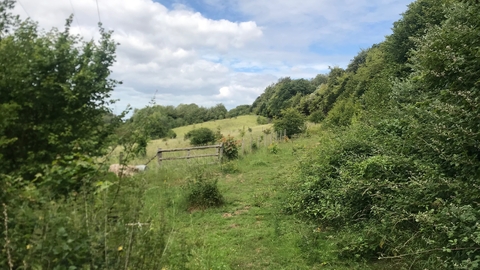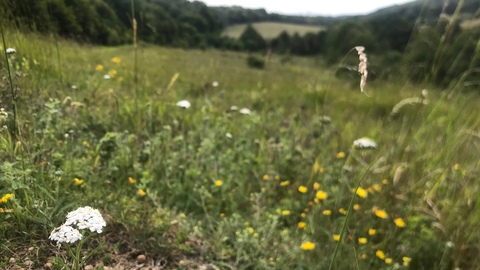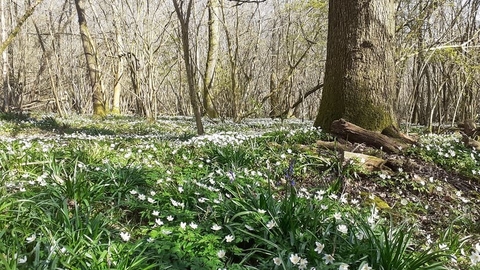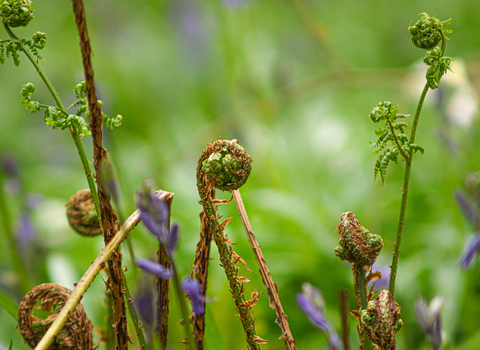

Ian Rickards

Ian Rickards
Quilters Wood
This reserve is not open to the public
Know before you go
Dogs
When to visit
Opening times
The site is not opened to the publicBest time to visit
n/aAbout the reserve
The woodland section is long and narrow running from north to south with the grassland part opening more widely towards the West.
Despite its small size the site contains varied habitats. The woodland consists of mixed coppice with a selection of native and planted tree species including hazel, hornbeam, ash and sweet chestnut. Some yew, cherry and whitebeam are also present. Sycamore has colonized the woodland and mature trees are widespread as well as seedlings and saplings. There are also stands of the non-native Norway maple in the southern part of the woodland. The ground flora includes ancient woodland indicator species like bluebell Hyancynthoides non-scripta, wood anemone Anemone nemorosa, early dog violet Viola reichenbachiana, early purple orchid Orchis mascula and lady orchid Orchis purpurea . The woodland supports a healthy population of hazel dormice and an extensive badger set. Ravens Corvus corax also breed here.
The grassland is classed as lowland calcareous grassland which is valuable for its botanic and invertebrate interest. Tor grass Brachypodium pinnatum dominates , especially in the northern compartment. Where rabbits have maintained a shorter sward herb species such as common bird’s foot trefoil Lotus corniculatus , wild marjoram Origanum vulgare , and wild basil Clinopodium vulgare are present and also pyramidal orchid Anacamptis pyramidalis . Butterfly species recorded include small heath Coenonympha pamphilus, small copper Lycaena phlaeas and green hairstreak Callophrys rubi.
Quilters Wood Reserve is particularly important for its reptile populations which have been monitored since the early 1990’s. Exceptional numbers of slow worm had been recorded in the past, with frequent sightings of adders, common lizards and occasionally grass snakes. Numerous ant hills are present within the pastures, playing vital part in dispersing seeds and providing basking spots for reptiles.

